Artists
A ‘Living, Breathing Entity’: Inside the Studio of Art Star Nico Vascellari
The Rome-based artist, who has amassed a huge following on Instagram, has an industrial studio in a former post office.
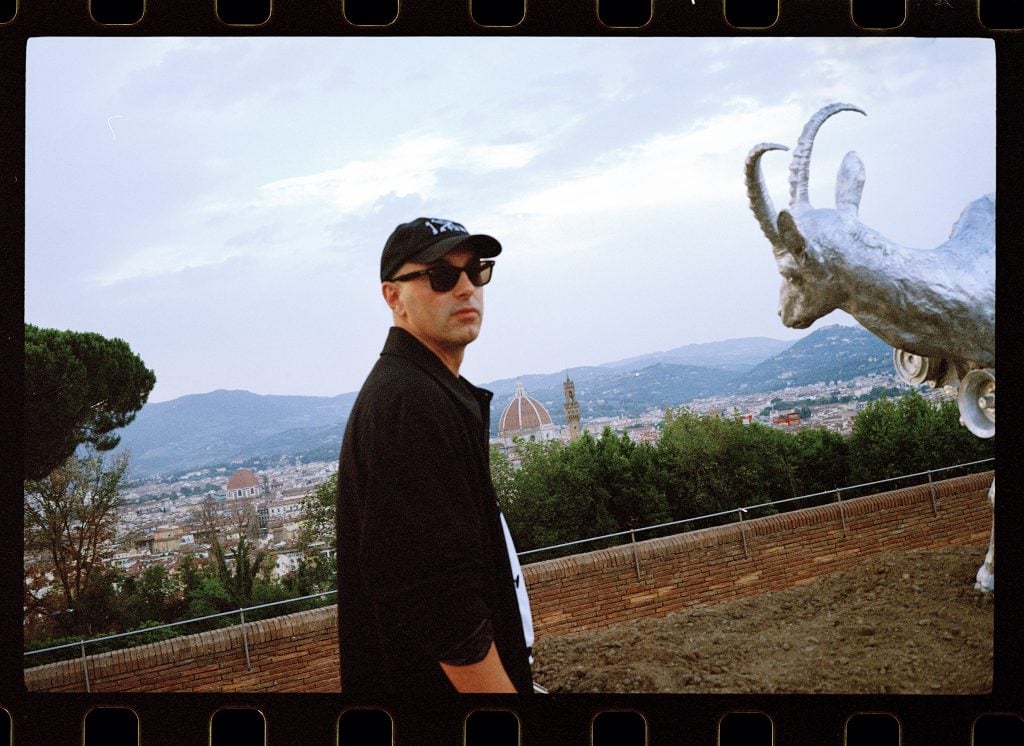
The Rome-based artist, who has amassed a huge following on Instagram, has an industrial studio in a former post office.

Jo Lawson-Tancred

Nico Vascellari has spent decades developing a proudly unconventional and confronting practice, which, in recent years, has seen an upsurge in international attention. Through both sculpture and performance, much of the Italian artist’s work combines an otherworldly beauty with a creeping sense of disquiet to surprise and intrigue the viewer.
One example is VIT (2020), a surreal video divided into three acts for which Vascellari was put to sleep and strapped to a gurney that was flown by helicopter over the forest and mountains of Cansiglio in northern Italy. This eerie vignette, partly inspired by the opening scene of the film La Dolce Vita (1960) in which a statue of Christ is transported from Milan to Rome, is followed by what the artist called a “nocturnal oneiric vision, a dream.” VIT is featured in the touring group exhibition “Poetics of Encryption,” which debuted this year at KW Institute for Contemporary Art in Berlin and travels to Kunsthal Charlottenborg on September 28.
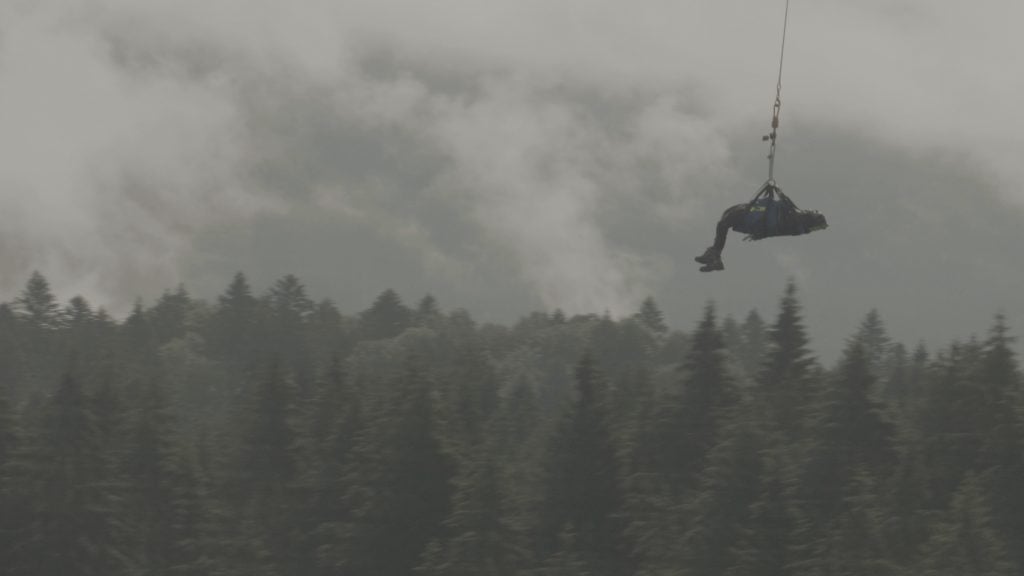
Video still of VIT (2020). Image courtesy Studio Nico Vascellari.
Last fall, Horse Power (2023), a series of part-animal, part-machine monuments that explore our confused relationship with the natural world, was installed at Florence’s Forte Belvedere. The Fifth Room (2024), included in Casa di Goethe in Rome’s “The Uncanny House” exhibition earlier this year, was a livestream of an unidentified underground bunker occupied solely by an endlessly rotating light bulb that begins to feel increasingly sinister.
Live performance and all its inevitably unpredictable elements are also central to Vascellari’s practice. Over the summer at Haus der Kunst in Munich, he presented the latest iteration of a series of performances named Alessio after a 26-year-old nonverbal autistic man who frequents the bar near Vascellari’s studio in Rome. The work, inspired by Alessio’s sounds and gestures, explored modes of self-expression beyond language.
How does such an expansive practice originate from one studio? Vascellari works out of a former post office in central-southern Rome that he described as “a raw, quasi-industrial space.” It is “less a static environment” than “a living, breathing entity, a place where echoes of past works and visions of future ones coexist.”
The studio truly is a place that has adapted to favor meditation, research, experimentation, and creation in the abstract rather than the practical sense,” he elaborated. “I would almost say it’s my safe haven. Since I travel a lot, I often find that inertia keeps the dynamics of my research and my creativity going, even and especially when it comes to the materialization of works, performances, and soundscapes.
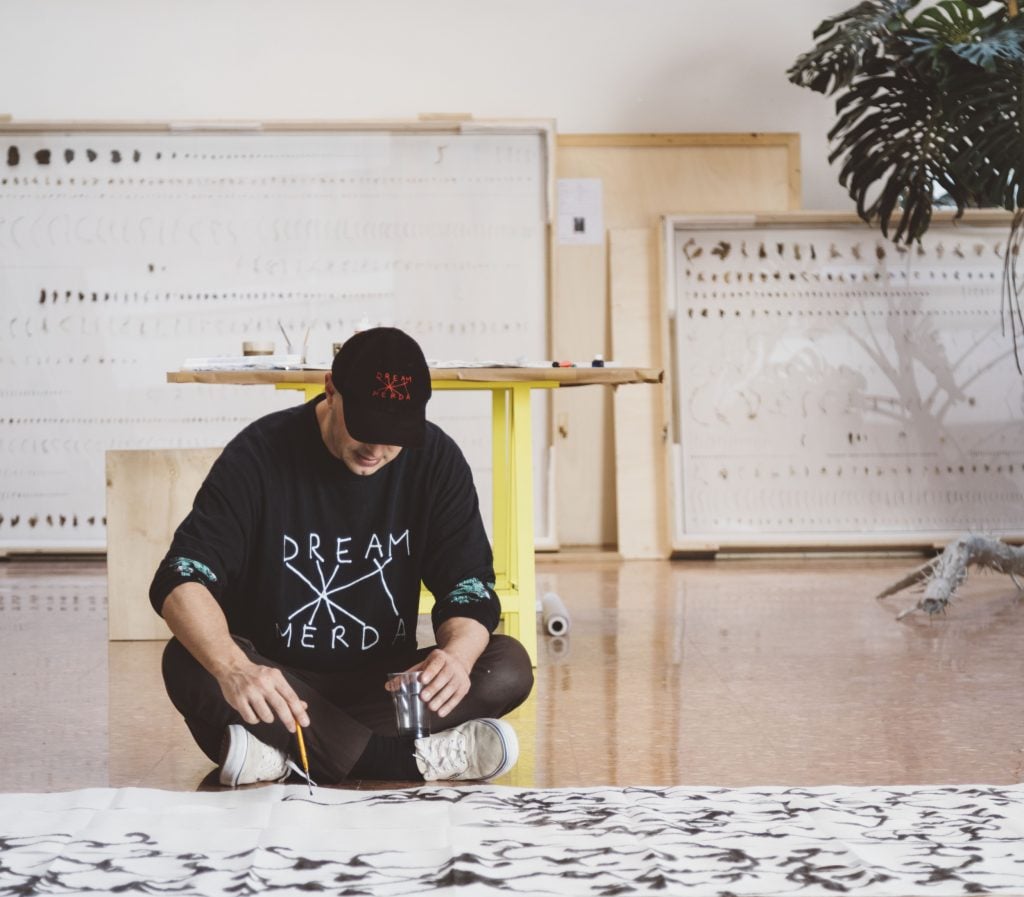
Nico Vascellari in the studio. Photo: © Lea Anouchinsky for Elle Decor Italia/HMI.
What kind of atmosphere do you prefer to work in?
The atmosphere in my studio is intentionally immersive, bordering on overwhelming. I surround myself with sound— mostly records and tapes from my collection, which I keep at the studio and I go through quite often for reminiscence or inspiration. It is almost a sonic cocoon that helps me channel the energy I need for my work.
Generally speaking, I am quite a collector—bordering on hoarder, I’m afraid—mostly of books, zines, music, concert memorabilia, band t-shirts, and other items. The rest of my studio is instead quite brightly colored. Inspiration also comes from these juxtapositions and the visual contrast they generate.
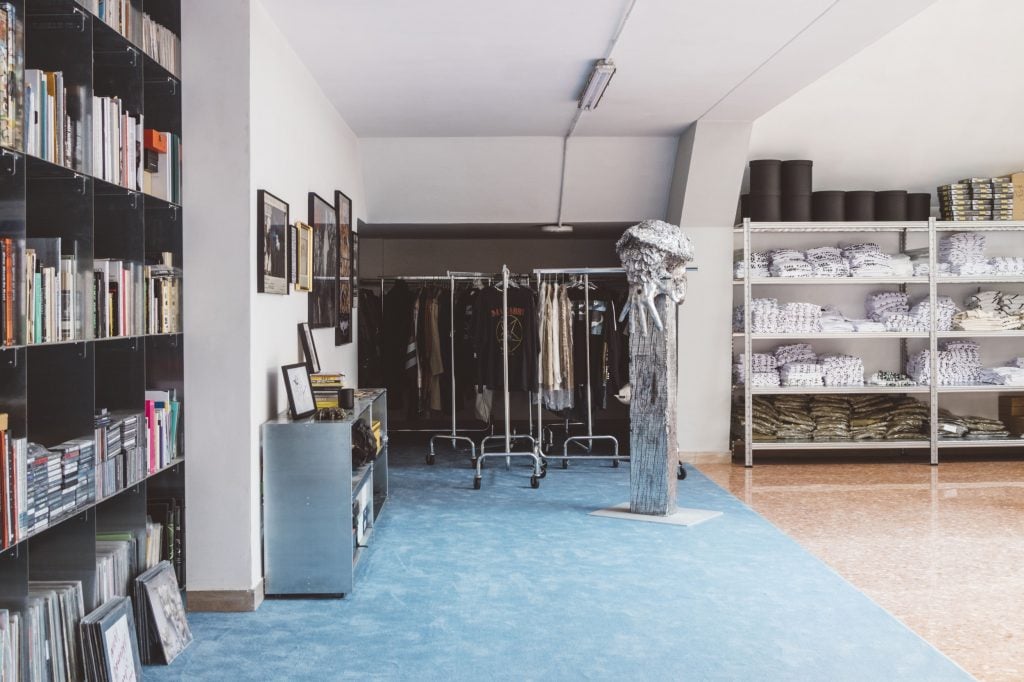
Studio of Nico Vascellari. Photo: © Lea Anouchinsky for Elle Decor Italia/HMI.
When you feel stuck while preparing for a show, what do you do to get unstuck?
When I hit a wall, I disrupt the routine. I’ll leave the studio and immerse myself in nature, often heading into the woods near my hometown in northeast Italy. The rawness of these environments allows me to reconnect with the primal energy that fuels my work. The forest of Cansiglio has also turned out to be the subject of various works like VIT (2020).
The idea of being asleep, additionally, recalls a painting by Caspar David Friedrich, Wanderer above the Sea of Fog, in which fog represents precisely the unknown. There arises a parallel here, to be made between the inevitable sense of occasionally feeling creatively stuck, and looking for a remedy in reconnecting with one’s roots, however primal.
What tool or art supply do you enjoy working with the most, and why?
When it comes to choosing a favorite tool or art supply, I find that nothing compares to the primal connection of using my hands. My hands allow me to truly feel and interact with the materials around me in the most authentic and visceral way possible. Whether I’m smearing paint, tearing paper, or shaping clay, I am drawn to establishing a physical connection with the elements.
What might surprise a visitor in my studio? You’ll find an eclectic mix of materials: plant leaves, melted chocolate, toilet paper, and even deodorant. It’s the texture of materials that excites me; they carry their own histories and references, their own qualities, and I enjoy exploring the possibilities.
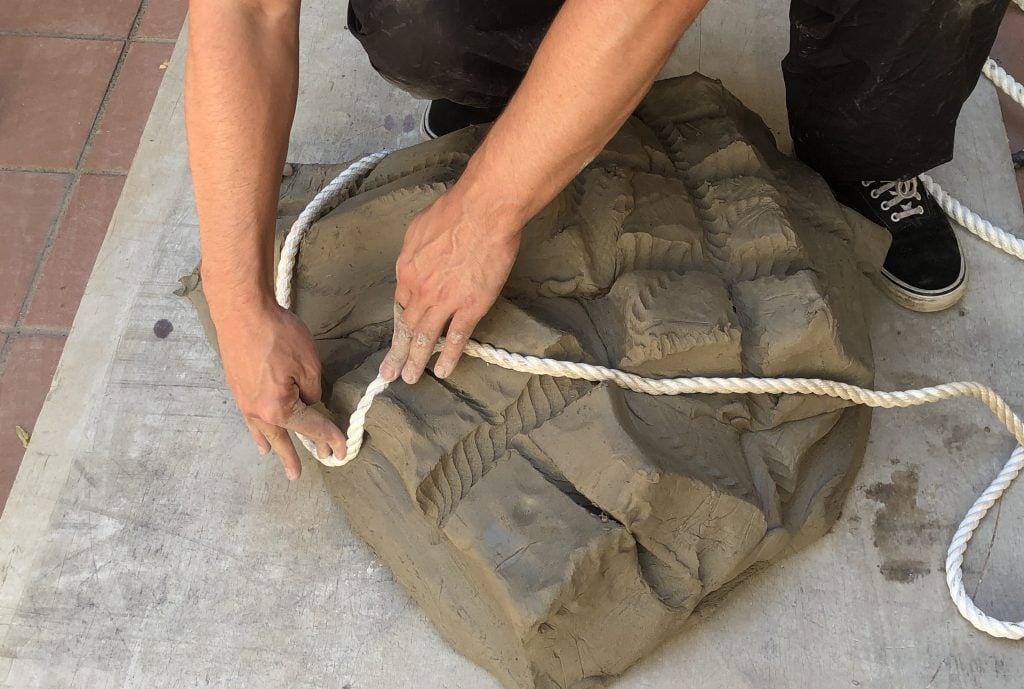
Studies in clay for a new artwork. Photo courtesy of Studio Nico Vascellari.
What else are you working on these days?
Lately, I’ve been delving into the visceral connections between the history of a certain location and the physical form, exploring how one can shape or call for elements of the other. This has certainly been a recurrent theme within my work over the years.
The last piece I’ve been working on is a terracotta iteration of a series of sculptures I debuted in 2011, “Bus De La Lum.” The name refers to a chasm of karstic origin that runs 180 meters deep in the forest of Cansiglio, near Vittorio Veneto. It means “hole of light” in the Veneto dialect and is said to come from ancient times when shepherds would throw the bodies of dead animals into it, which then decomposed and produced wispy fires. Over the years, legends linked to witchcraft arose around these phenomena.
During World War II, the place had one more function, it became a mass grave. The “Bus De La Lum” sculptures are an exact reproduction of several clay blocks weighing the average weight of a human body dropped from a height of about 80 meters. This recent series of terracotta sculptures emerged from the violent collapse of several masses of clay. The intensity and force of the production actions are evident, creating a strong connection between the sculpture’s form and the organic, whether human or animal.
Is it challenging to work on sculptures of such a huge scale in a studio? What have been some of the biggest challenges to overcome?
Working on large-scale sculptures definitely presents unique challenges, especially when it comes to the physicality of the materials involved—metals and stones have their own demands. While my Rome studio is perfectly suited for the initial stages—research, sketching, prototyping, and detailed work—the real challenge begins when these sculptures start to take on their full size and weight. When the scale outgrows what the studio can accommodate, I move to the foundry, where it’s easier to work on these large pieces.
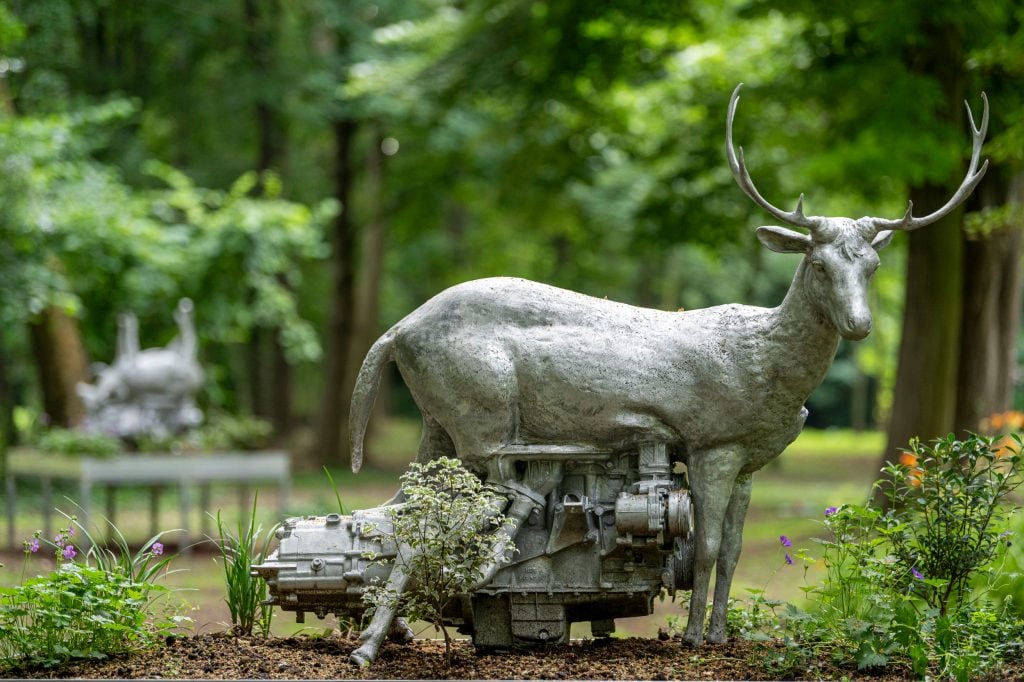
Nico Vascellari, Horse Power (Deer) (2023) installed at Banca Ifis International Sculpture Park in Mestre, Veneto. Photo: Lagoon Alvise Bortolanza, courtesy Banca Ifis and Studio Nico Vascellari.
One of the biggest challenges I’ve had to overcome is maintaining the integrity of the original vision as the sculpture grows in size. What works in a digital rendering or on a small prototype doesn’t always translate perfectly to a larger scale. You have to constantly adapt, making adjustments that respect the material’s limitations while staying true to the concept.
This was particularly true of a series of sculptures I presented at Forte Belvedere in Florence last summer. Horse Power (2023) consists of 9 animal-machine hybrid elements, each depicting a life-sized animal found in major car logos. The aluminum sculptures being so large and articulated, the shaping, melting, and assembling stages have had to take place directly at the foundry. The sculptures are now part of the permanent collection at the International Sculpture Park of Banca Ifis in Venice Mestre and are beautifully embedded within the gardenscape.
How did you prepare for the performance Alessio? Was it site-specific to the two venues Salone dei Cinquecento and Haus der Kunst?
The preparation for both was intense and quite unpredictable. In the studio, I experimented with movement and choreography but the real work was selecting the performers and having them connect with the idea and the movements. The performance wasn’t rehearsed in the traditional sense—it was more about creating a framework, a set of possibilities, and then allowing the performers, the space, and the audience to dictate the flow. For this reason, I needed the performers to rehearse in the final performance location.
The settings were very different and crucial to the development of the performances. The Salone dei Cinquecento is renowned for its frescoes depicting brutal wars. When I focused on the contorted bodies in those artworks, it reminded me of Alessio, a nonverbal person in the autism spectrum whom I observed daily at a bar just across my studio in Rome. It felt like the perfect context to present the work.
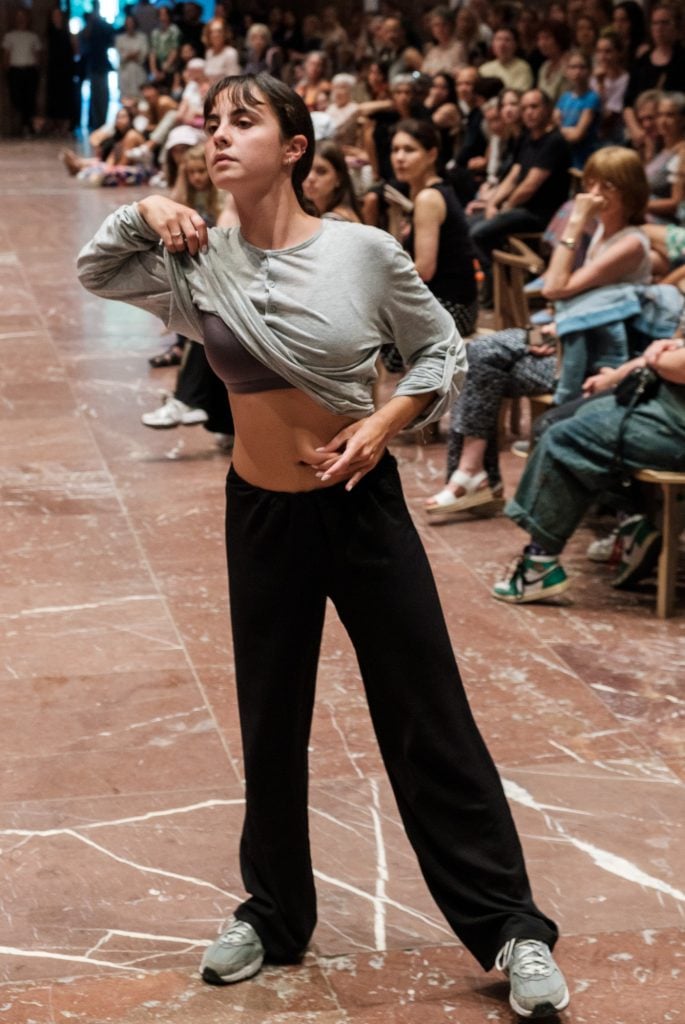
Nico Vascellari, Alessio (2024), view of performance at Haus der Kunst in Munich. Photo: Franz Kimmel, courtesy of Haus der Kunst and Studio Nico Vascellari.
At Haus der Kunst, initially, I was assigned the main central hall, but I felt the need to expand, which led to opening all the museum doors, including the one to the terrace, and thus bridging three different inside and outside spaces. To me, this was a way to recreate a similar scenario to the one I experienced in my studio, which is why the projection of an almost three-minute loop of the real Alessio was in that particular spot and why the sound was distributed all over the spaces.
What have you got coming up that you are excited to show the world?
I’m working on two new main projects at the moment both inspired by locations so dense in history and meaning to the locals that they are proving quite challenging to tackle. The first is a large installation for Piazza della Signoria, in Florence, which gathers inspiration from the Primavera by Sandro Botticelli, and the history and traditions of the city, while also reflecting on the general role and layout of monuments and public art.
In early 2025, I will be presenting both recent and new works in various indoor and outdoor spaces of Palazzo Reale in Milan, including the majestic Sala delle Cariatidi. This solo project is set to feature performance, sculpture, installation, video, and sound works and draws inspiration from the history of the Sala, particularly the events of the 20th century that led to its near-total destruction in 1943 Milan, and the subsequent monumental 1953 exhibition of Guernica by Pablo Picasso.